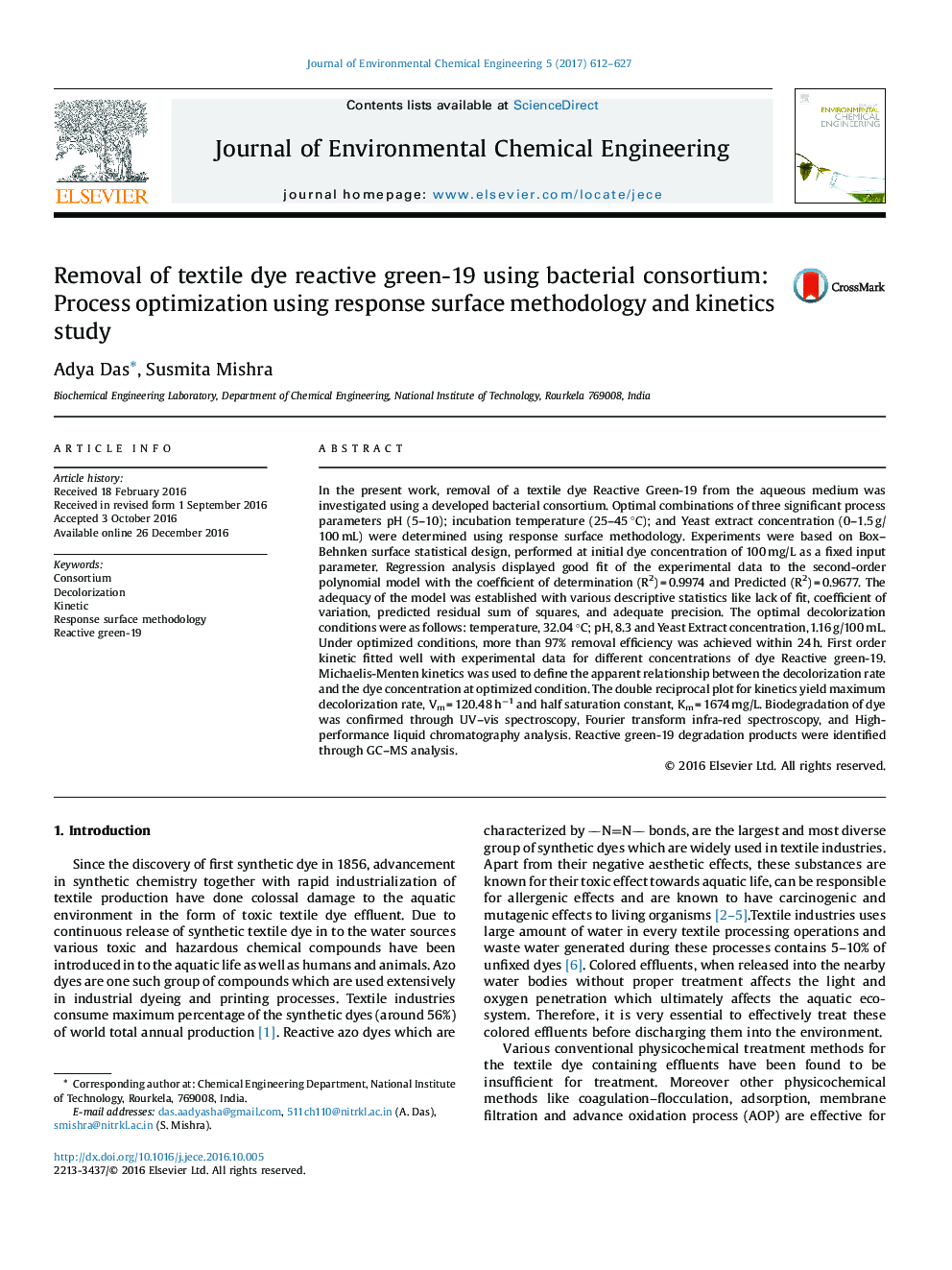| Article ID | Journal | Published Year | Pages | File Type |
|---|---|---|---|---|
| 6477437 | Journal of Environmental Chemical Engineering | 2017 | 16 Pages |
â¢Removal and subsequent degradation of Reactive green-19 dye using a novel bacterial consortium.â¢Optimization of important process parameters using RSM based on Box-Behnken statistical design.â¢Under optimized condition more than 97% removal was achieved within 24 h.â¢Bio-decolorization process follow first order kinetics for different concentrations of Reactive Green-19.â¢Biodegradation and reduction of azo bond were confirmed through different analytical techniques.
In the present work, removal of a textile dye Reactive Green-19 from the aqueous medium was investigated using a developed bacterial consortium. Optimal combinations of three significant process parameters pH (5-10); incubation temperature (25-45 °C); and Yeast extract concentration (0-1.5 g/100 mL) were determined using response surface methodology. Experiments were based on Box-Behnken surface statistical design, performed at initial dye concentration of 100 mg/L as a fixed input parameter. Regression analysis displayed good fit of the experimental data to the second-order polynomial model with the coefficient of determination (R2) = 0.9974 and Predicted (R2) = 0.9677. The adequacy of the model was established with various descriptive statistics like lack of fit, coefficient of variation, predicted residual sum of squares, and adequate precision. The optimal decolorization conditions were as follows: temperature, 32.04 °C; pH, 8.3 and Yeast Extract concentration, 1.16 g/100 mL. Under optimized conditions, more than 97% removal efficiency was achieved within 24 h. First order kinetic fitted well with experimental data for different concentrations of dye Reactive green-19. Michaelis-Menten kinetics was used to define the apparent relationship between the decolorization rate and the dye concentration at optimized condition. The double reciprocal plot for kinetics yield maximum decolorization rate, Vm = 120.48 hâ1 and half saturation constant, Km = 1674 mg/L. Biodegradation of dye was confirmed through UV-vis spectroscopy, Fourier transform infra-red spectroscopy, and High-performance liquid chromatography analysis. Reactive green-19 degradation products were identified through GC-MS analysis.
Graphical abstractDownload high-res image (139KB)Download full-size image
